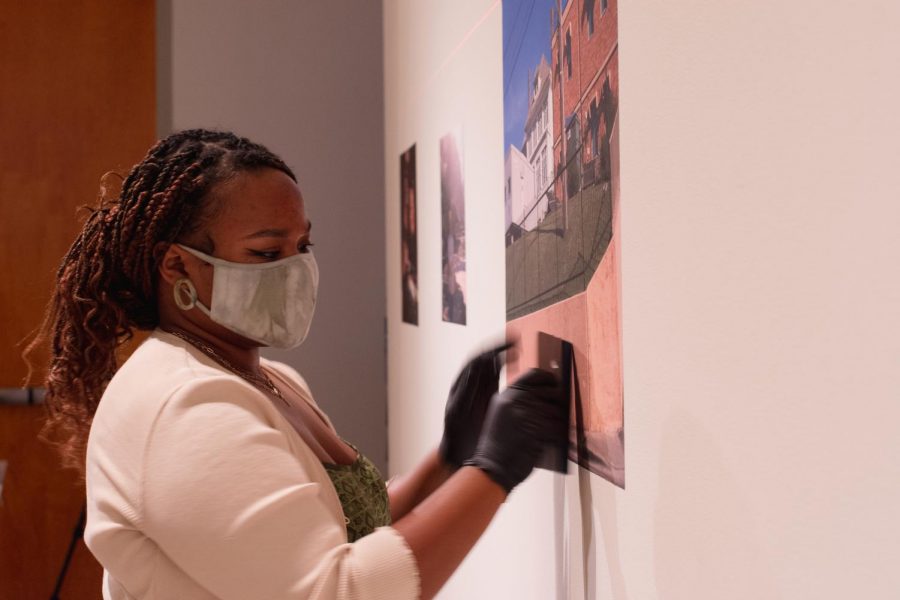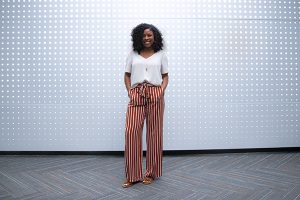Q&A: Senior Madison Cooper shares her experiences creating collection of identity-based art
September 29, 2021
Madison Cooper creates art by standing behind a camera, capturing the inaccurate perceptions of race and amplifying the unique aspects of identity. Outside of photography, Madison spends her time carving sculptures and crafting prints that incorporate her roots and journey of self-discovery.
Following the recent installation of Cooper’s first solo exhibition, “(Untitled) Fanon,” at UT’s Visual Arts Center on Sept. 24, The Daily Texan spoke with Madison about the intimate elements of her artistic journey and the implications of some of her recent works.
Daily Texan: Could you describe the intention of your pieces?
Madison Cooper: My pieces talk about moments and memories growing up in the Black community and seeing myself, and then going to a predominantly white institution and seeing that perspective. I’ve been really interested in recreating moments that have been defining for me as a Black person.
DT: What are some of the biggest challenges you’ve faced as an artist?
MC: I have definitely experienced some microaggressions on campus. When I first got into UT, I had a couple professors in the art program who were like, “Oh, you should look into all these different artists like Kara Walker and Charles White who do race-based work because you are a Black artist and those are the things you should be interested in.” And so I’m now trying to reteach and relearn myself. Being a Black artist does not necessarily mean that you can strictly make Black art because you can make so much more. No matter what your differences are and no matter what you look like. I am trying to break myself out of that box I put myself into.
DT: What is one important piece you’d like to share more about?
MC: I remember stumbling across an article about people who were interested in being tourists in Austin one day, like places you should stay away from. One of those places was Riverside Drive, an area I’ve called home for three years now. I decided to make a film titled “Riverside,” which really tried to answer the question of whether the area is deemed dangerous because of the people of color or if it’s just close to the richer areas of town.
DT: Where does your inspiration come from?
MC: My community that I grew up in is such a welcoming environment that definitely prepared me for life and being open to other people. They are really inspiring in that way. I also get a lot of inspiration from other students that are also in school with me. When COVID happened, we all had to go home, and it was really hard for me to draw inspiration because it’s really inspiring to see other students that are your age working on stuff and pursuing their dreams.
DT: What other topics would you like to cover in the future?
MC: I really haven’t had the opportunity to do a lot of work that’s outside of race, but I would like to explore more about intimate moments that are tied to me but not necessarily tied to my gender. There are some moments where I do incorporate mental health and that kind of thing, self-image and self-esteem, but I’m definitely interested in doing more.











